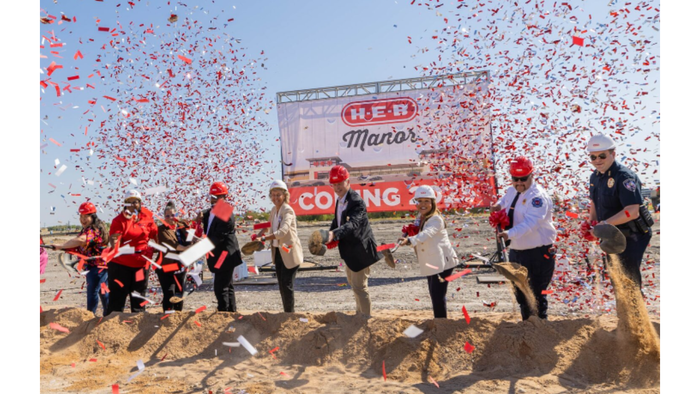Smart staffing
January 1, 2018
In good times and in bad, supermarkets face a number of strategic staffing decisions every day that impact customer service levels and the bottom line. By focusing on a variety of workforce management modules, chains are primed to exploit the talent of their best associates, better manage schedules and ensure critical store-level tasks are competed—all factors that can help chains lower operating costs, comply with labor regulations and increase customer service and sales.
Clearly, grocery has fared better sales-wise during the recession compared to other segments of retail. Yet, even that didn’t protect grocers from downsizing their workforces.
“Whether they cut their workforce or failed to keep all departments fully staffed, chains’ workforces have shrunk,” says Kara Barker, director of retail and hospitality marketing for Kronos, a workforce management software provider based in Chelmsford, Mass. “As grocers shift their attention toward recovery, all eyes are on how to implement a solid workforce that will enable them to meet consumer demand.”
At the heart of this renewal is the addition of workforce management solutions. Grocers are no strangers to the technology, but deployments are ready for a facelift, observers say. Historically, grocers used statistics on foot traffic and transaction volume as key metrics for aligning staff. The process worked well during peak times, but made it difficult to determine what was happening as shoppers waited in line at the front end.
“The goal is not to have more than two people waiting on line at checkout,” says Jon Lawrence, vice president of product strategy for retail, at Waukesha, Wis.-based software firm RedPrairie. “Retailers need to use queue time and the position of shoppers in the queue during peak periods, to learn how to better allocate labor in a way that will deliver more value to shoppers and encourage them to return to the store three or four times a week.”
All of these factors struck a nerve with officials at K-VA-T Food Stores, a 106-store chain based in Abingdon, Va., operating under the Food City banner. Officials wanted to explore the impact of automating workforce management—which had been a manual process—on IT and operations.
From an IT perspective, “There is a natural imbalance of that data pulled from our ERP systems to feed our data warehouses for our marketing initiatives compared to the information we use to support our operations, including workforce management,“ says Paul Widener, the chain’s vice president of information services. “We are sitting on a gold mine of data that will help us to properly staff our team.”
On the operations side, K-VA-T officials need to be mindful of how its labor issues are impacting cost. “Labor management is about placing the right person in the right place at the right time,” says Jeff Black, the chain’s director of customer service enhancement. “We need to have the right solution in place that will help us use our existing data to put people in the right positions at the time we need them there. This formula will help us drive sales and control costs at the same time.”
To ensure it put the proper solution in place, K-VA-T wanted input from all business sectors, including store managers, IT and accounting. While the solution had to be flexible and scalable, the key prerequisite was a system with automation across different operations, including monitoring for compliance with legal regulations and internal policies.
For example, 47% of retailers receive complaints from employees regarding time and attendance data, such as being compensated for overtime, according to a study conducted by Boston-based AMR Research. The study reported input from approximately 100 retailers.
More sobering, the average fine for noncompliance lawsuits filed in the last 12 months was $250,000, the study says. “Minimizing this risk alone can justify the purchase of an automated workforce management solution,” says Janet Sherlock, AMR’s research director.
Interestingly, all retailers struggle with compliance, “but almost half of respondents that participated reported that money was unnecessarily wasted,” Kronos’ Barker adds.
Keeping these and other statistics in mind, K-VA-T expects its workforce management solution to protect itself from these issues and streamline its scheduling processes.
“We want to be able to layer operations into the system. It is not just about time and attendance for us,” Widener says. “We need to be able to take our store labor information and integrate this into our enterprise business operations, including marketing and sales, and see how it impacts our payroll.”
K-VA-T is currently piloting Kronos’ time and attendance system. A pivotal solution since “it touches every person at every one of our locations,” Widener says, the technology is integrated with the chain’s time clocks as well as other entry points, such as store-level PCs.
The company is currently customizing the solution to enable users to access the system from wherever they have an Internet connection, allowing them to electronically view their schedules, request time off and even swap shifts with colleagues.
“It fosters more interaction and controlled functionality for the staff, while taking the burden off our managers,” Widener says.
K-VA-T plans to add the functionality to point-of-sale units as well. The chain, which is using the solution in a handful of stores, plans to install the remaining 100 locations by the end of the third quarter.
Once the module is in place, the chain will embark on the next phase of its workforce management plan: integrating the suite’s optimized scheduling module. This component relies on forecasting that helps the grocer to staff based on consumer demand levels—a factor that officials expect to have positive impact on customer service levels.
The chain expects to begin installing the solution in the first group of stores after the holidays. The solution will be incorporated at K-VA-T’s distribution center as well.
The final phase is to incorporate an analytics module that will allow store and district managers to drill down into schedules and results, and understand labor hours, sales and impacts on payroll. “Just using punch clocks and basic reporting systems is an antiquated, reactive option,” Widener says. “It was impossible to immediately see any issues, let alone reconcile them in a timely manner.”
Using Kronos’ analytical functions, the chain will be able to monitor scheduled hours, overtime, as well as project future scheduling needs, according to officials for the retailer. “They can project what schedules and labor will look like this weekend and what will happen to our payroll,” he says. “It gives us the ability to drive more benefit from our schedules.”
Besides time-savings for management, workforce management promises to provide other benefits. “While we are eager to see several results related to cost reductions, increased service, automation and compliance monitoring, overall we really are looking to the suite to meet our aforementioned mantra: getting the right people in the right place at the right time,” K-VA-T’s Black says.
Help with hiring
To maintain customer service in an economic downturn it is paramount to match each associate’s talent to the proper position—not an easy task when retailers are forced to make decisions by sifting through volumes of paper applications.
Abingdon, Va.-based K-VA-T is taking the burden off of its hiring managers with an automated hiring solution that helps the chain not only screen applicants, but also ensures the best employees are filling appropriate positions.
Supermarket chains can be compared to “small cities within themselves,” says Kara Barker, director and retail and hospitality marketing for Chelmsford, Mass.-based Kronos. “There are so many departments and sections within a grocery enterprise that it makes the different types of mission critical positions extensive.”
It is so extensive that no manual process could possibly ensure the best candidates were filling positions. K-VA-T knew this challenge first hand.
“Manual hiring was a huge burden for human resources and store-level managers as well, so we welcomed an automated solution,” says Paul Widener, the chain’s vice president information services.
K-VA-T added Kronos’ automated hiring system that can screen applicants, analyze characteristics and match applicants to the appropriate open position. The application has been in place for a couple of years, and “100% of our employee applicants are processed through the system,” he says.
The chain has kiosks at store-level and within the distribution center. Candidates can also apply for positions at K-VA-T’s website, www.foodcity.com. “It is a good process but we are adding even more capabilities,” Widener says.
For example, once applicants are offered the position, there are still manual paper-based forms used for the hiring process.
About the Author
You May Also Like




